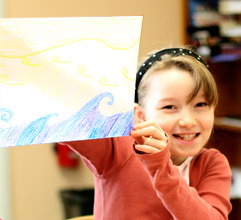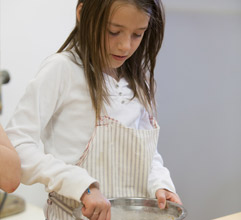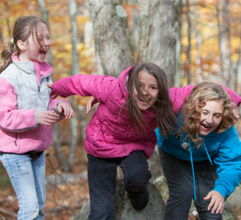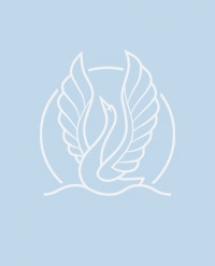Third Grade




Abby Desharnais
Third Grade Teacher
Keene State College, BA
Elem. Ed. Cert.
In third grade, we begin applying the skills built in the lower grades to learning new knowledge.
Language Arts time is devoted to all of the many areas that build strong readers and writers, including spelling, grammar and vocabulary. We often focus our reading and writing on content that supports our science and social studies learning.
Students have many chances each day to engage in reading activities either independently, with a partner or as a whole group. They are supported in developing and applying strategies that will help them to be strong, engaged readers. Lessons in such areas as making connections, using context clues, predicting, making inferences, and using text structure may be presented to the whole group, small groups, or individuals. Using Lucy Calkins’ Units of Study for Teaching Reading, we read within many different genres, and later in the year we read and discuss literature from the Junior Great Books series. Students are also expected to read nightly as a part of their homework.
Writing happens throughout our day, but Writing Workshop presents specific lessons on organization, ideas, word choice, grammar, etc. One way we learn about writing is to study anchor texts in depth, and try applying strategies used by that author. Students often choose their own topics and formats for writing, and also sometimes write to a specific assignment. The writing process will be emphasized. Units of Study in Opinion, Information, and Narrative Writing by Lucy Calkins will be used to guide our work.
Third graders use Words Their Way to study word patterns appropriate for their particular spelling level. They also work on mastering high frequency words that do not follow regular phonics patterns. Spelling work will happen in class and may be assigned as homework.
For Math, students use Investigations in Number, Data, and Space. They build on the mathematical ideas they already hold through many hands-on experiences, taking concepts from concrete to abstract as developmentally appropriate. Students are encouraged to develop their own strategies for solving problems, and through sharing and discussion, they identify those strategies that are the most efficient. Fluency of math facts is reinforced through the use of various games and strategies, including the computer-based program Reflex Math. Classes include whole group instruction, group/partner work, and independent practice. In addition to use of the textbook, students engage in explorations, problem-solving, games, projects and student-led sharing.
In Science, students study many elements of the natural world around them. Properties of water, forces and motion, and air and weather are among our topics of study. As much as possible, students have hands-on experiences, and opportunities to observe, question, design, build, test and reflect. Classes may involve time outdoors, research conducted in the classroom, and both independent and group projects.
Social Studies is designed to help students explore the physical and social characteristics of our world. We study the geography of our immediate surroundings, our country, the world, and how that geography affects the people who live there. We extend mapping skills, and make connections between this and our work with water and landforms in science. We also focus on the idea of culture, and learn about leaders and heroes. Time in class is spent on inquiry, discussion, research, projects and sharing.
In Spanish class, the goal is to create situations where the vocabulary is contextualized. As students are exposed to the language, they move from being able to recognize a word and to react to it, to being able to use it in a given situation. The main tool to contextualize language is through stories created in class using a lot of visual support. Songs and games also play an important role. In third grade, students begin to learn reading and writing. With the help of written language and their wide range of vocabulary, class stories become more complex. The focus this year is on reinforcing and expanding the following areas: greetings, colors, numbers (0-69), time telling in connection to daily activities, body parts, emotions, clothing, common objects at school and at home, foods, animals, family vocabulary, extended family, to express likes and dislikes and action words. On the cultural side, we learn about Our Lady of Guadalupe, a Mexican celebration.
In Art, students explore elements and principles of art including line, shape, color, form, texture and pattern. They use a variety of art media including watercolor and acrylic paint, oil pastels, soft pastels, pencils, printmaking materials, beeswax, clay and other sculpting supplies. Many projects are integrated with the third grade science and social studies curriculum, including a study of art from around the world to coincide with third grade geography, and artwork inspired by the scientific properties of water, earth and air. The curriculum also includes a long-term sculpture unit where students create forms from a variety of materials while learning about the work of several 3-D artists. Third graders have plenty of opportunities to create artwork from their own ideas and imaginations during "Studio Days" set aside each trimester for free exploration. They also have the chance to share their own artwork and the explore the work of famous master artists during class discussions.
Integrating singing, playing music, movement, speech and drama, in third grade Music class students begin to develop musical autonomy through part-singing (rounds, partner songs, and harmony or descant parts) and more independence in arrangements for tuned and un-pitched percussion instruments. We also introduce soprano recorder, an instrument that calls for more fine motor and breath control, into the mix. In addition, we begin to incorporate standard music notation into the work. In drama, we work on crafting characters and narratives through storytelling and drama exercises.
In Health Education class, the main topics covered are: physical activity, healthy food choices, home hazards, family traditions, ears and eyes, community health, and illness prevention. We also address social and emotional health through work on conflict resolution, self esteem, and how to communicate to others. The Health Education program has been developed in accordance with guidelines of the State of New Hampshire Health Education Standards and the National Health Education Standards.
The goals of Physical Education are to expose children to a variety of activities, games and sports; to teach teamwork and friendly competition; to encourage students to give their best; to let them experience a variety of activities so that they can enjoy and be physically fit for a lifetime. The classes encourage and enable all students to have experiences of success and good sportsmanship.
During STEAMS block, third, fourth and fifth grade students may work together as a group and other times may break up into smaller mixed-age groups. The focus of the activities is on Science, Technology, Engineering, Arts, Math and Service. The year begins with SPIRALS, a unit on sustainability designed by a research group at UNH. Once that is complete, students and teachers decide on another theme. The goal of the block is to have students exploring their interests, working in mixed-age groups, and spending more time integrating ideas and activities.
